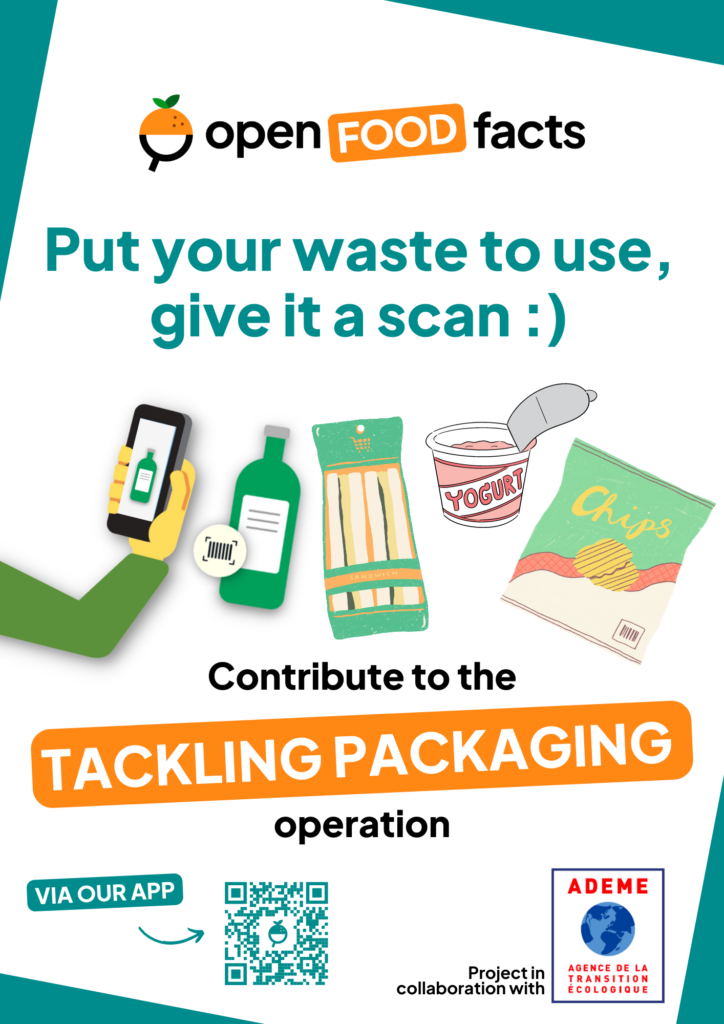Join the “Tackling Food Packaging” operation ! #TacklingPackaging

What drives the project?
Food packaging is part of French people’s daily lives, providing many services but also generating numerous environmental impacts, which companies and consumers are more and more aware of.
Thus, 29% of French citizens consider that waste management is one of the most worrying environmental issues (source: Déchets chiffres-clés L’essentiel 2021 – published by ADEME, the French Agency for Ecological Transition). Most of the waste produced in France is not recycled but buried or burned; either because of a lack of knowledge on how to recycle the material or because it is not collected. Several recent laws (AGEC, the law “Climate and Resilience“) aim to reduce the impact of packaging by mobilising companies, consumers and government services.
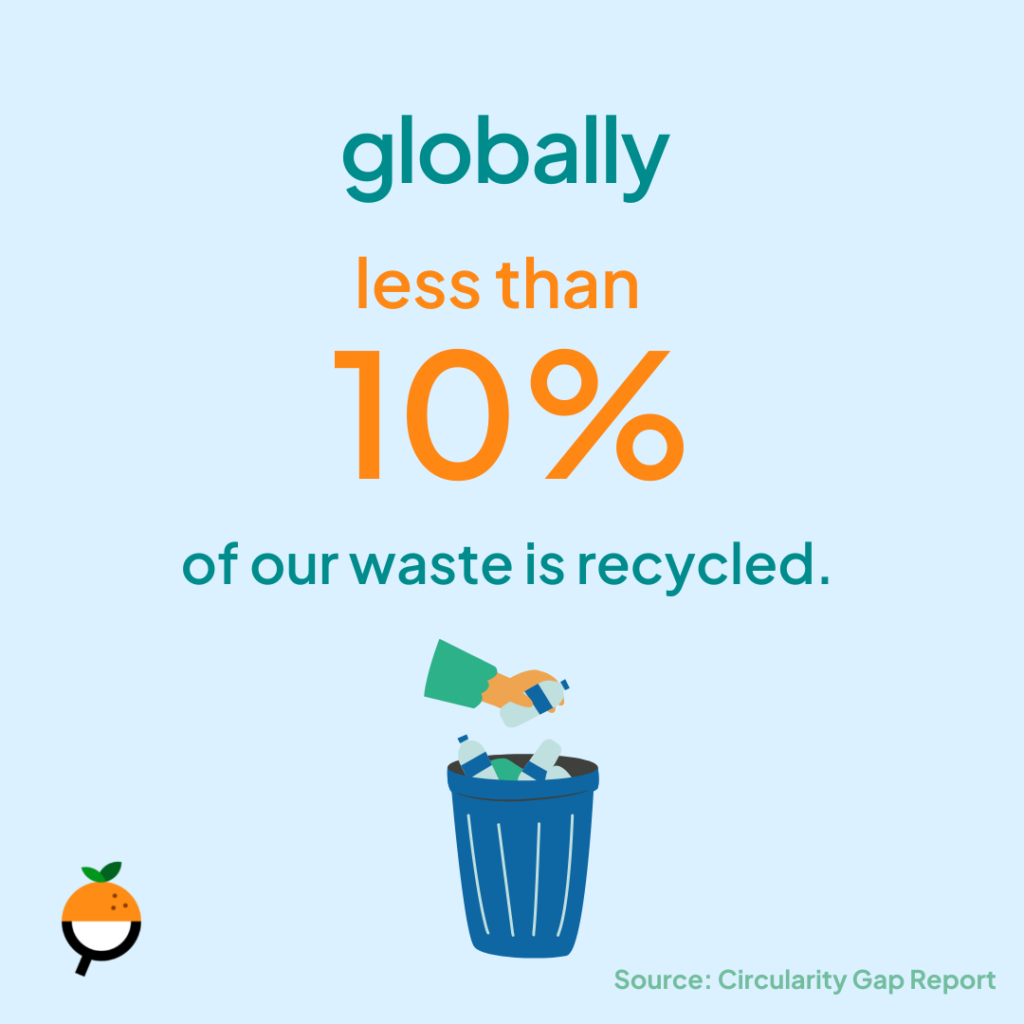
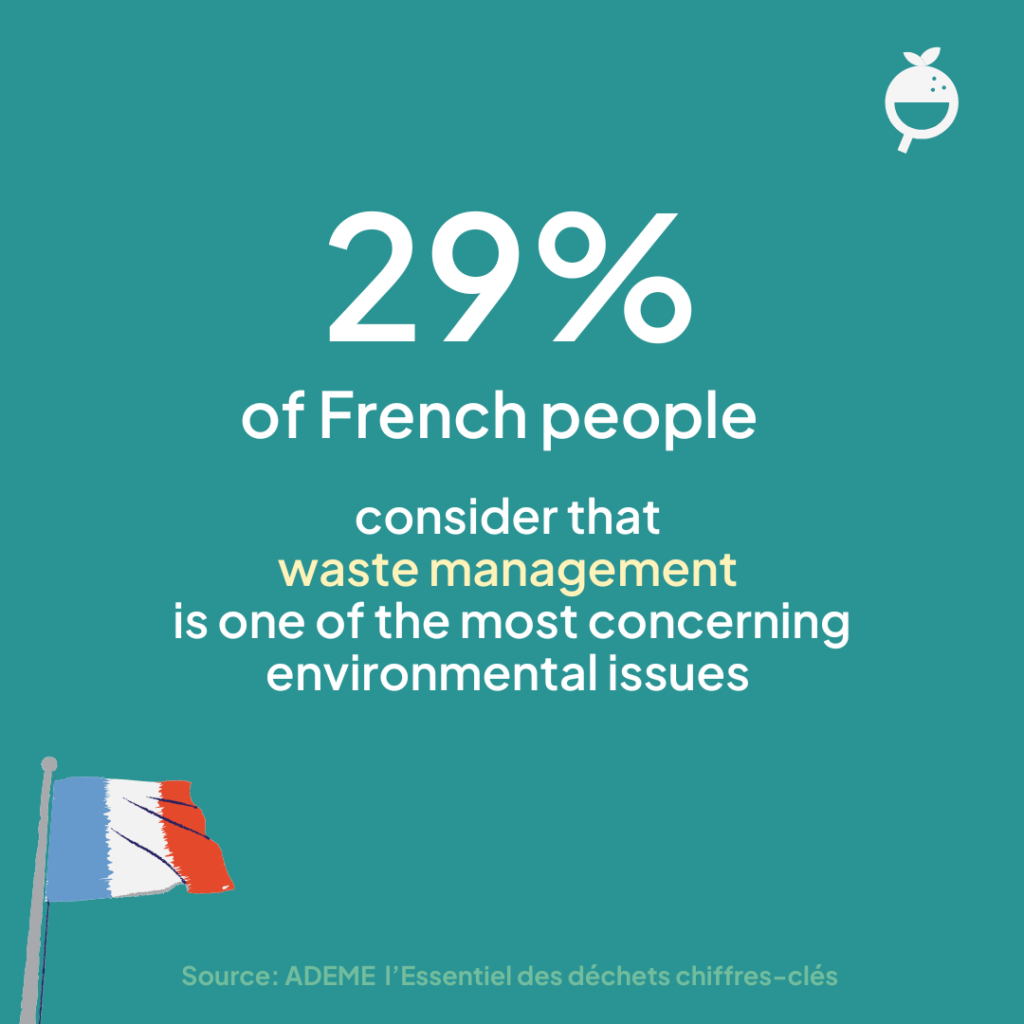
To give everyone the means to act, Open Food Facts and ADEME are launching an exceptional participatory operation to collect complete data on food packaging. This is a valuable resource to find ways to reduce their environmental impact, promote eco-conception, sorting, environmental labelling*, and research. This data will be consolidated in a public database, accessible to all and updated over time. This project will be carried out in collaboration with manufacturers and consumers.
| *Focus on environmental labelling: The Climate and Resilience Law aims to deploy environmental labelling in the main French consumer sectors by 2025. The food sector is one of the most advanced, with the government’s intention to deploy an official system in 2023. Packaging data will be taken into account in the calculation of the score. Collecting this data upstream will accelerate the deployment of official environmental labelling, in France and internationally. |
The “Tackling Food Packaging” project (in french, Plein pot sur les emballages)
Open Food Facts will collect very precise information on each element of food packaging (shape, material, weight, sorting instructions) from manufacturers and citizens.
This information will be freely reusable (“open data”).
It will enable ADEME and all stakeholders (researchers, public decision-makers, journalists, experts, producers, teachers, the general public) to better understand the issue of reducing the impact of packaging in the current environmental context.
| The “Tackling Food Packaging” project consists of: 🔵 on the one hand, improving the data collection tools on Open Food Facts (software, tutorials, documentation) to allow the greatest number to contribute, 🔵 on the other hand, conducting a “flash” operation until the end of March 2023 to massively enrich the database with the participation of companies and consumers. |
This project will create transparent, accessible, reusable (open data) and totally new information to empower action:
- Informing demand: by allowing consumers to identify products with the least impactful packaging, and to follow the evolution of their packaging consumption.
- Encouraging eco-conception: by encouraging emulation between brands, by providing manufacturers and industries with detailed statistics on the packaging of their products and by suggesting possible eco-conception options on our free platform for producers.
- Supporting environmental labelling: the data collected will allow us to validate the formula of the future official environmental label, and then to make it available to the general public (via apps, online shopping sites, etc.)
- Improve public policies: public authorities will be able to use open data for new purposes (prediction and monitoring of packaging-related waste production, quantification of the impact of public policies, leverage of public action on the various players).
- Support and fuel scientific research: researchers from all over the world will be able to cross data, compare it in different countries, and identify new ways to reduce the impact of packaging.
To do so, we need detailed information on the packaging of each product, including the shape (box, bottle, etc.), the material (PET plastic, glass, etc.), the instructions for recycling and (ideally) the weight of each element of the packaging.
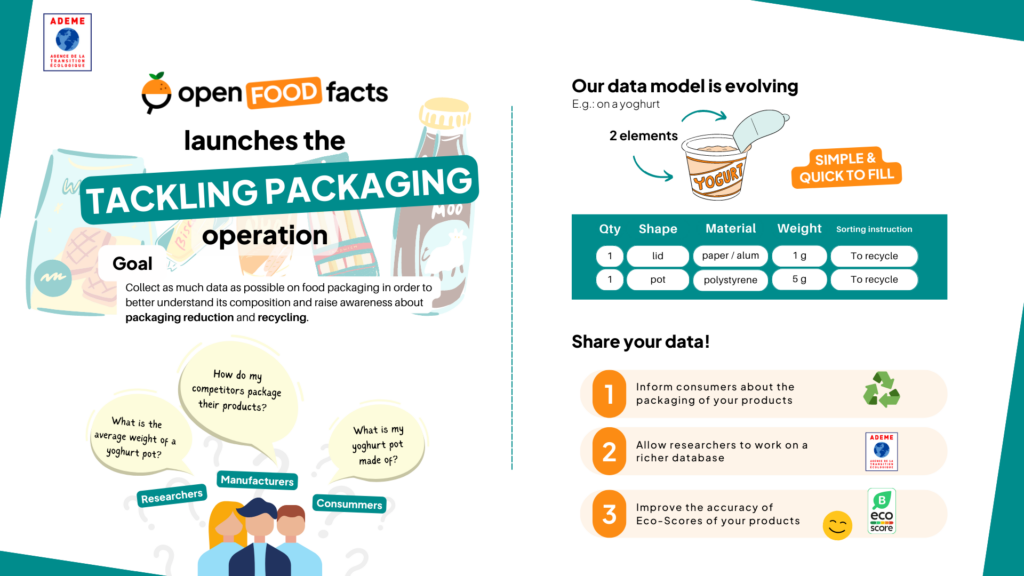
We therefore invite :
- Citizens to enter the packaging data of the products they consume into the Open Food Facts database, via the website or the application
- Manufacturers to submit their product packaging data to Open Food Facts via the platform for professionals
Take part in data collection
Why participate as a citizen? 🧐
Open Food Facts is first and foremost a participatory citizen project that relies on thousands of concerned consumers around the world to add data about food products to its database. As a free and open digital commons, the database is then accessible to all and allows for many useful reuses, from scientific research to various re-user apps. Without its contributors, this “Wikipedia of Food” would not exist and would not have the same impact.
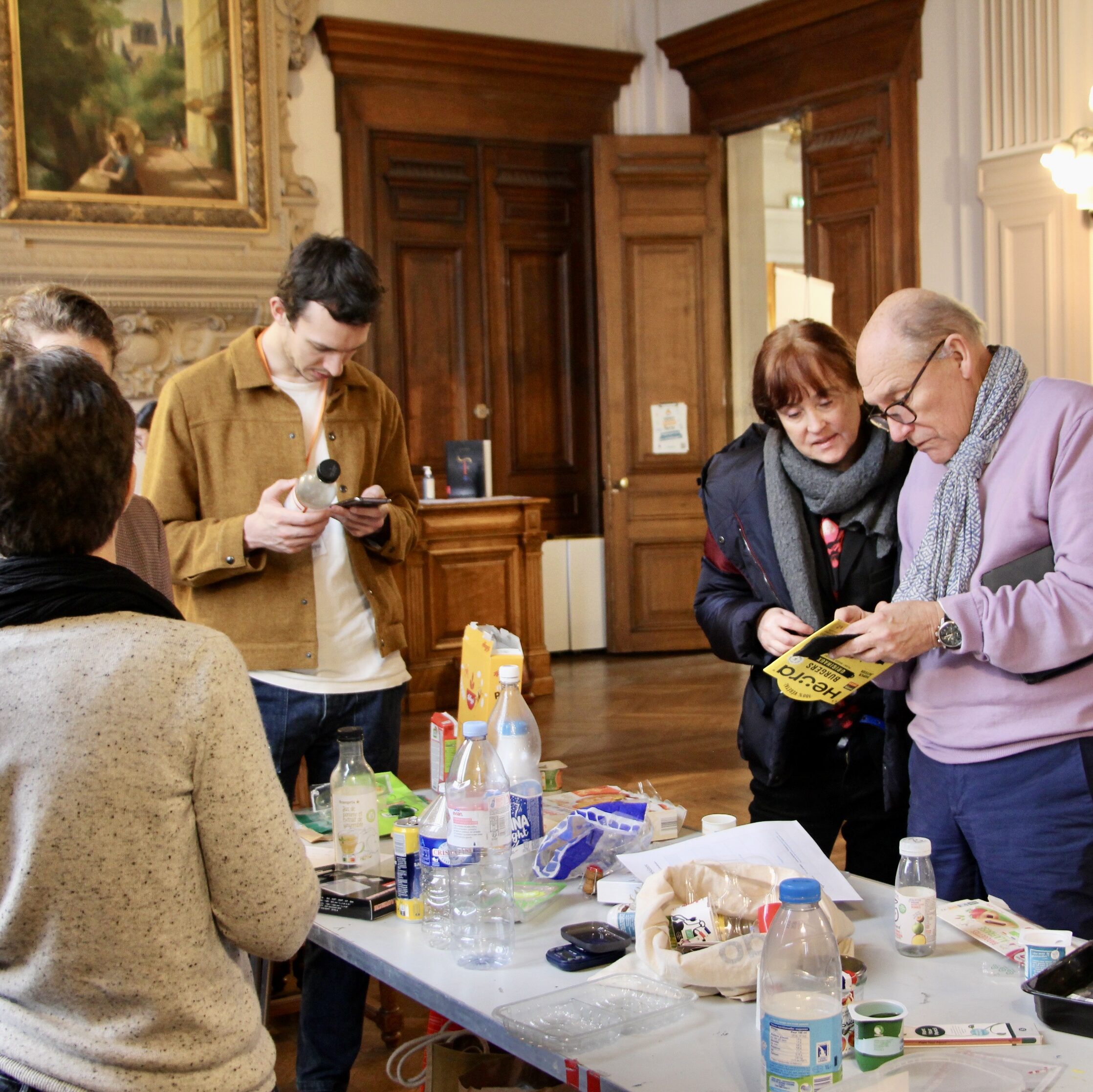
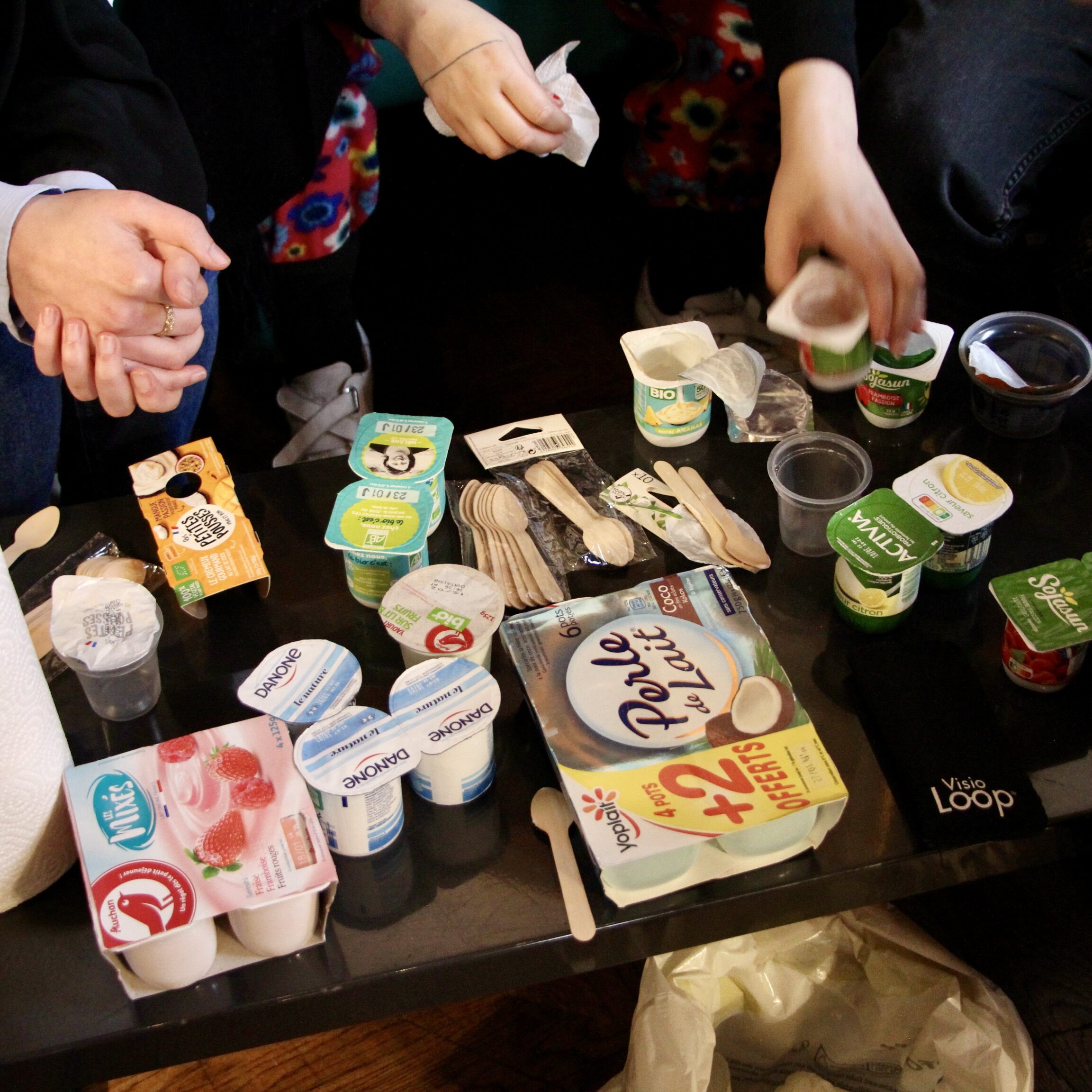
How to enter data: step by step
We’ll use a yogurt as an example, but any food package is suitable for data entry.
Once you have finished eating your yogurt, here are the steps to enter the valuable data on its packaging:
1. Wash/dry (or wipe clean with a paper towel) all packaging components (e.g. jar, lid, etc.).
2. Log in or create an account on Open Food Facts (website or app) – it’s free, your personal data remains completely private and there are no ads!
a. On Open Food Facts (website or mobile app), find the product in question (either by scanning it or by searching for its barcode number in the search bar).
b. Click on EDIT THE PAGE

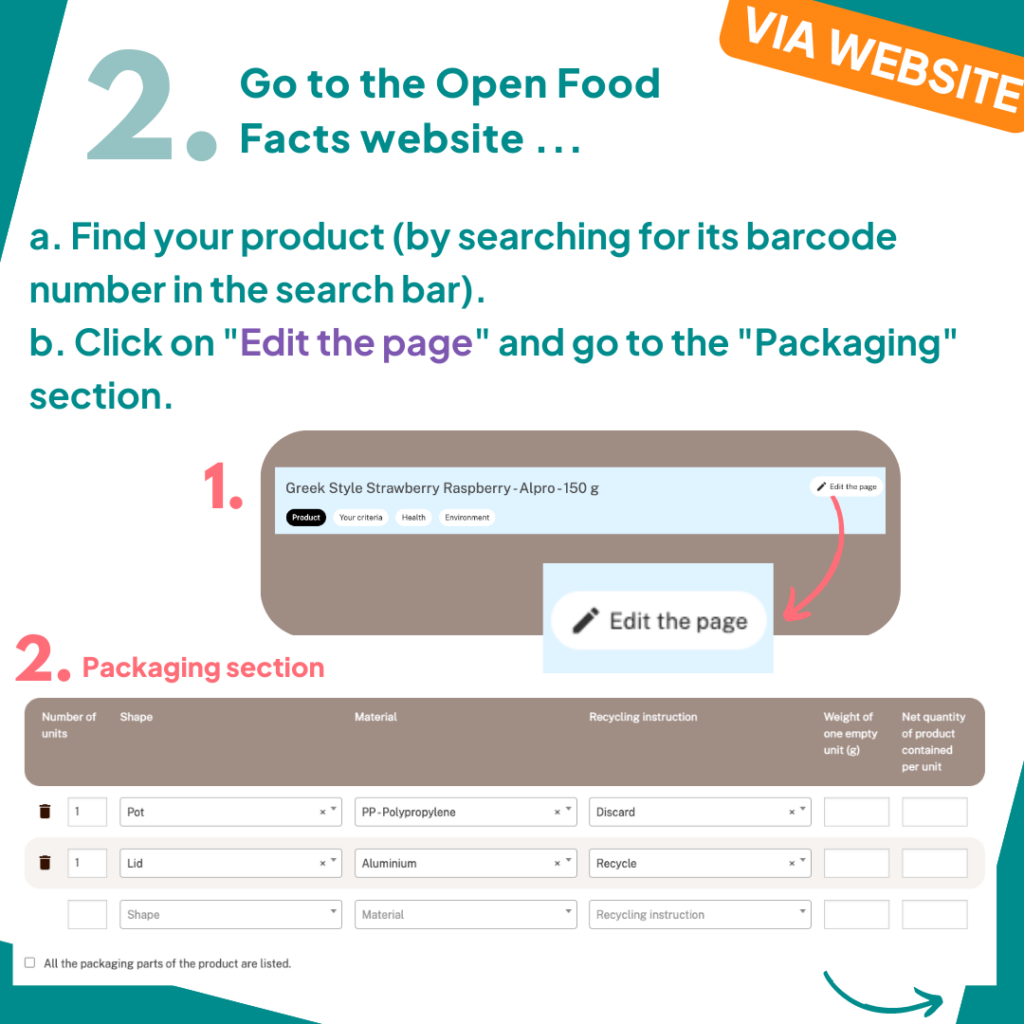
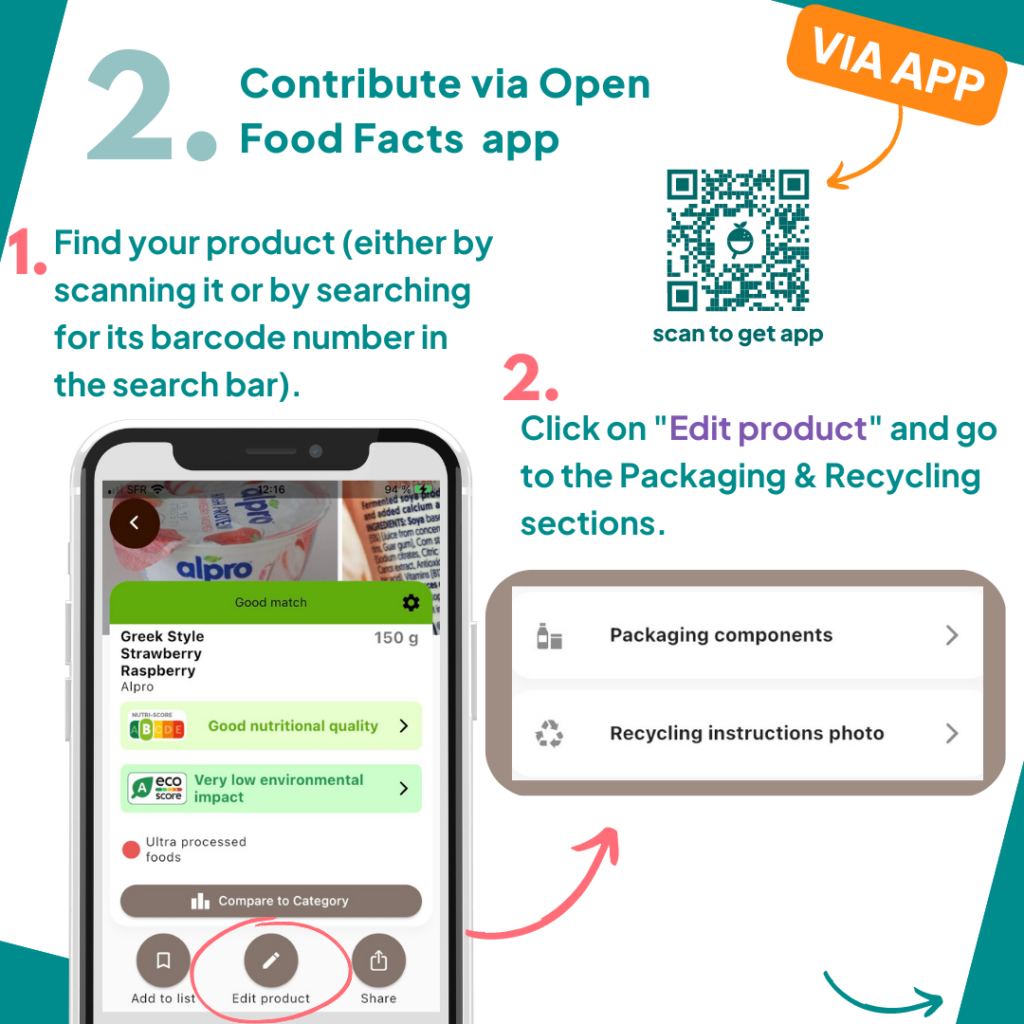
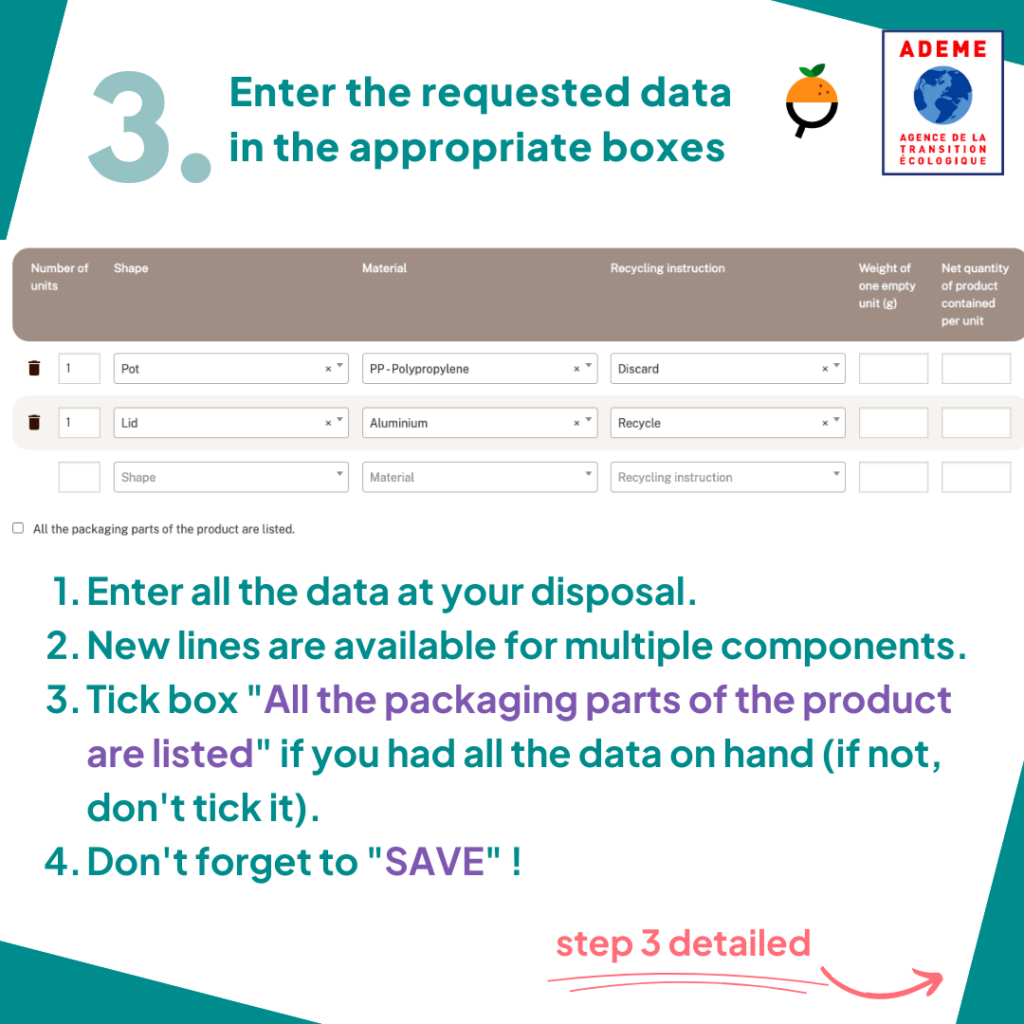
3. In the PACKAGING section, enter data on :
The number of units (e.g. if the yogurt pack is 4 pots),
the shape (e.g. pot),
the material (e.g. PS – usually embossed at the bottom of the pot),
the recycling instructions (sometimes of the box of the pack),

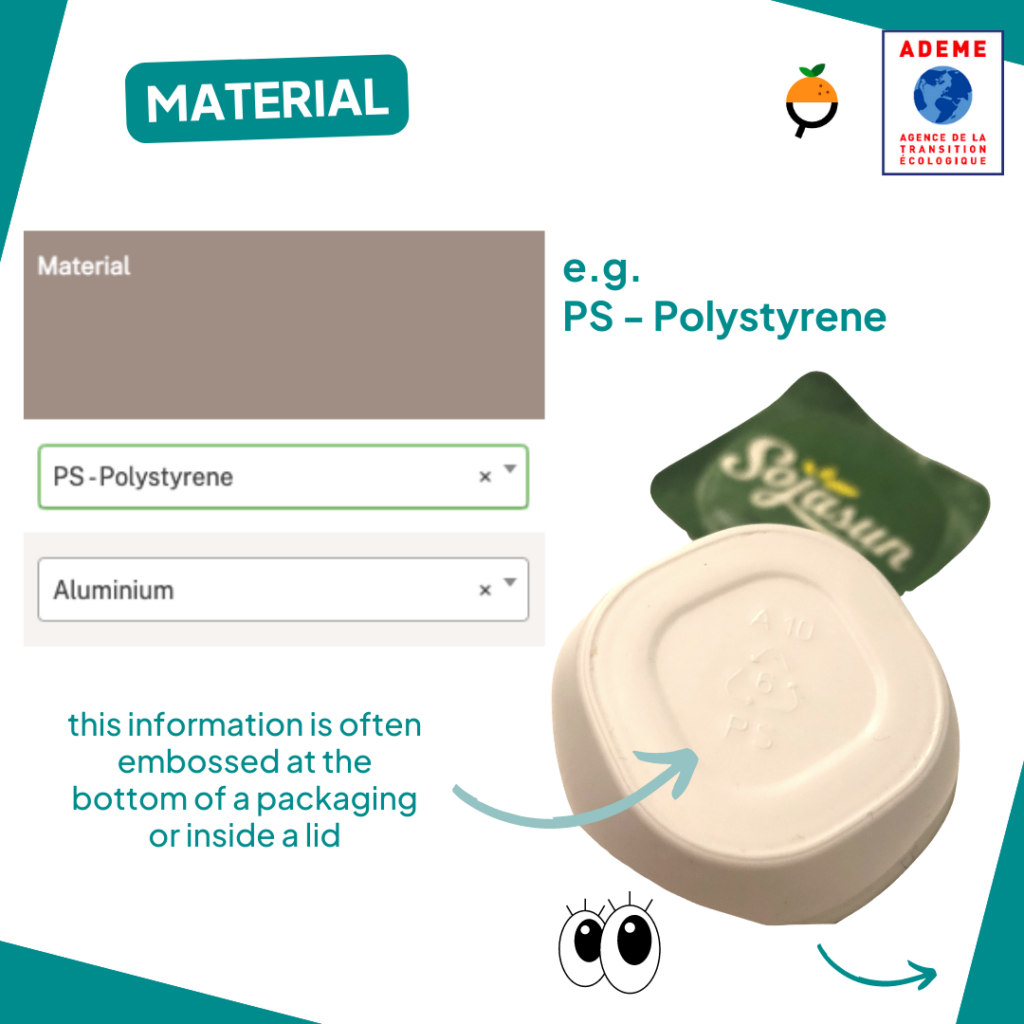

the weight (if you have a precise scale to 0,00 grams ; hence the importance of making sure the packages are clean),
and the product quantity per unit.
Example: I have a pack of 4 yogurts pots surrounded by a cardboard box.
Once the packages are empty / clean / dry, I fill in the information and weigh one by one each of the elements (for quantities, I write down : x4 pots, x4 lids, x1 cardboard).
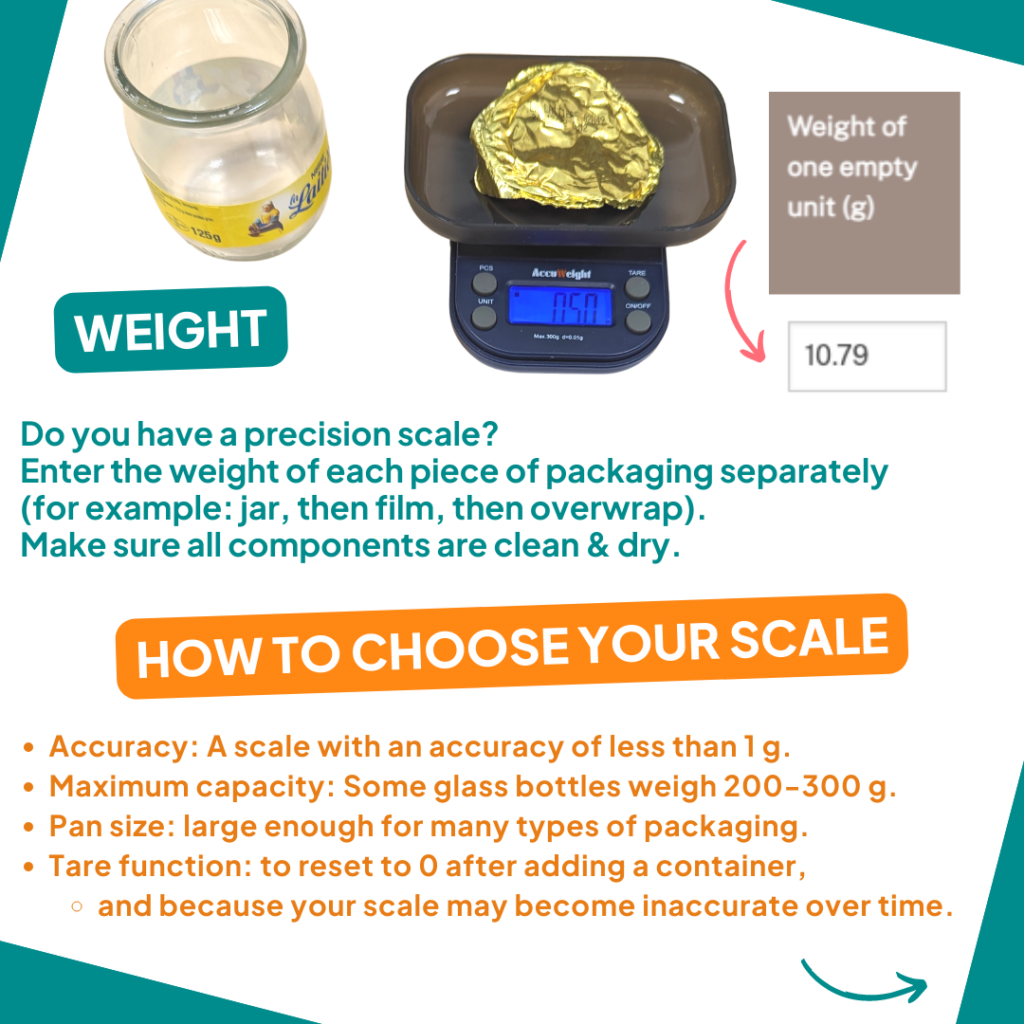
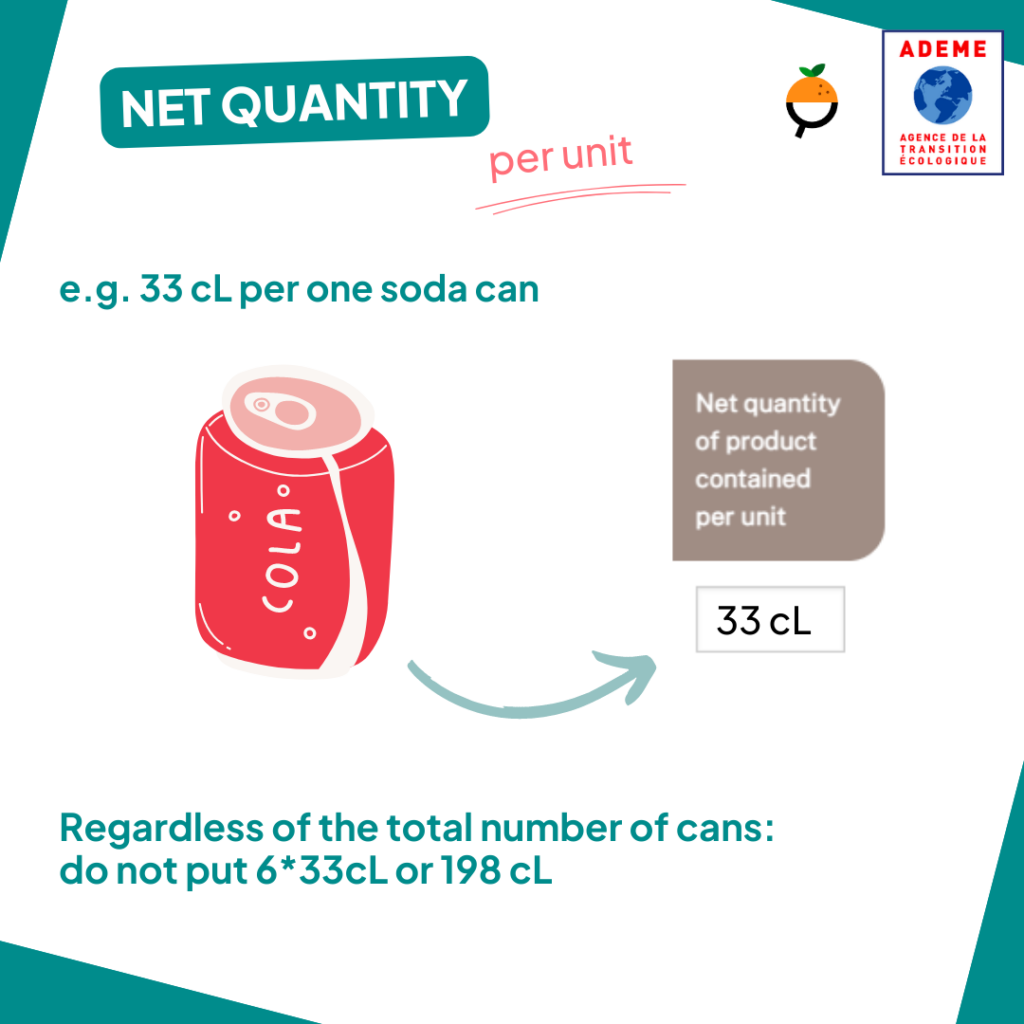
If you have all of the information, tick the box “All the packaging parts of the product are listed”.
What if I don’t know a piece of information (e.g. weight)? 😳
I enter the data I have and do NOT tick the box “All the packaging parts of the product are listed”.
You can also update the pictures.
And of course, “Save” your great work 😃!
Your mission is now accomplished! CONGRATULATIONS! BRAVO! Thank you for contributing to citizen science! 😊
Follow us on our social media accounts to make sure to stay updated on our open and participative project !
Are you interested in a scale ?
Take a picture of the package and publish it on Insta, Facebook or Twitter with the following hashtag #TacklingPackaging and try to win a prize (draw in March 2023).
But above all, let’s spread the word about this collection in order to have a maximum of citizens mobilised for a maximum of “packaging” data collected!
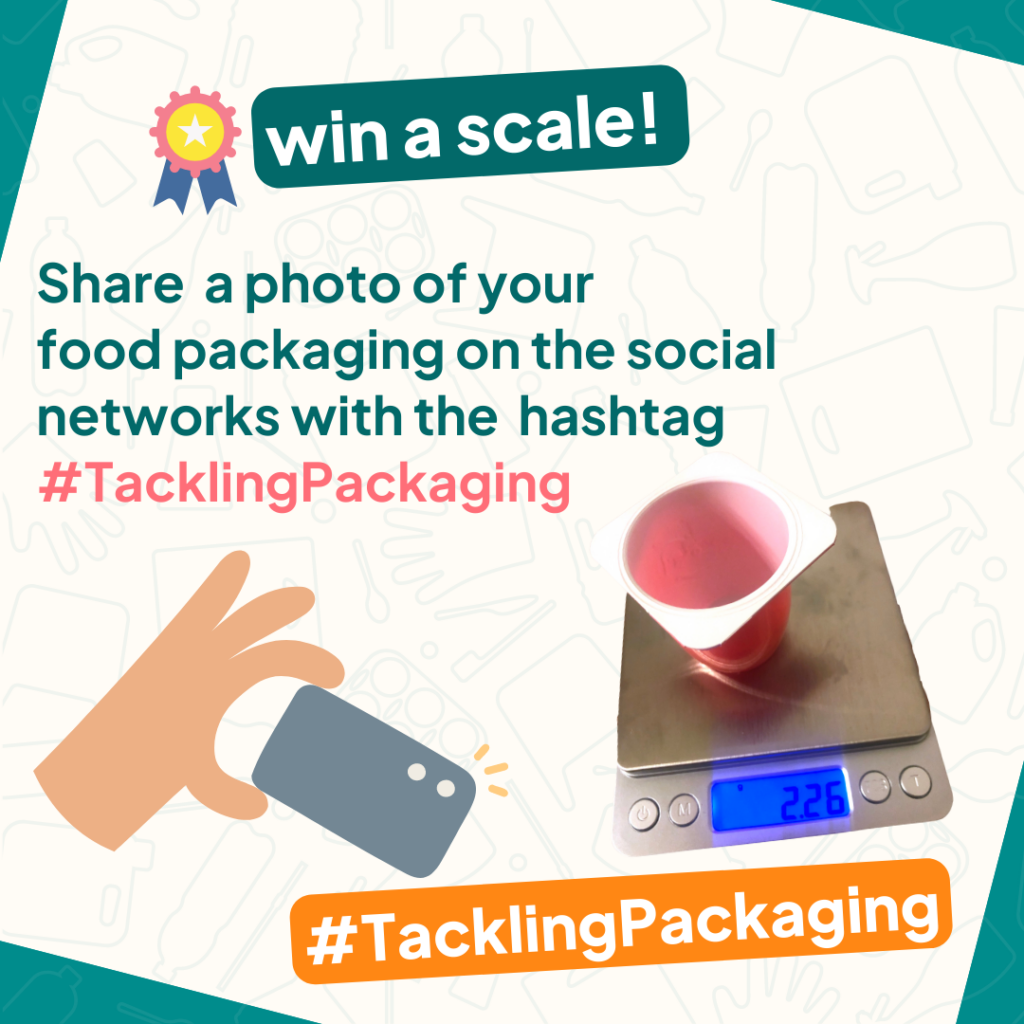
To relive the launch event (in French only)
You’ll find the video recordings of our launch event at the Académie du Climat on the 12th of January 2023.
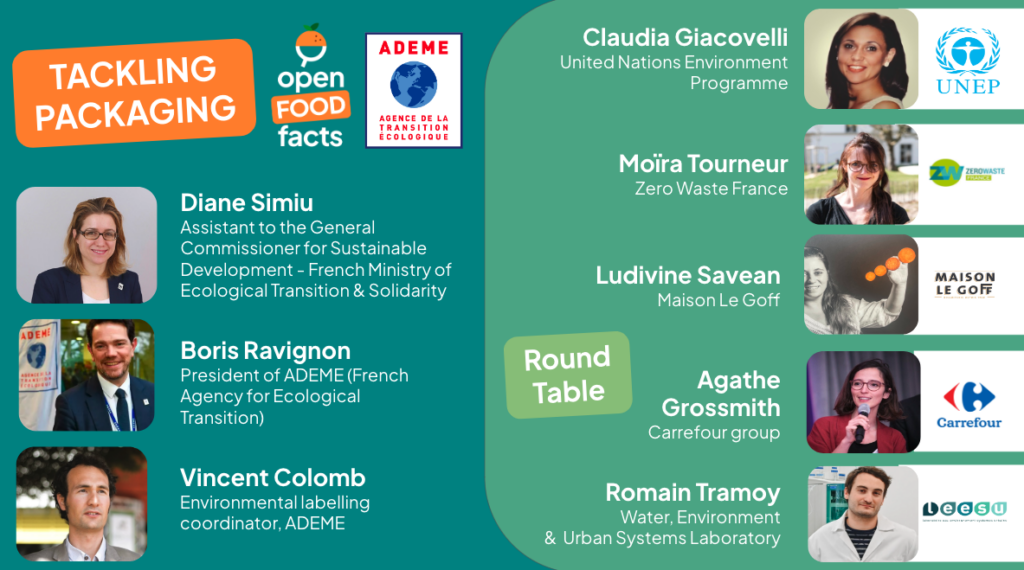

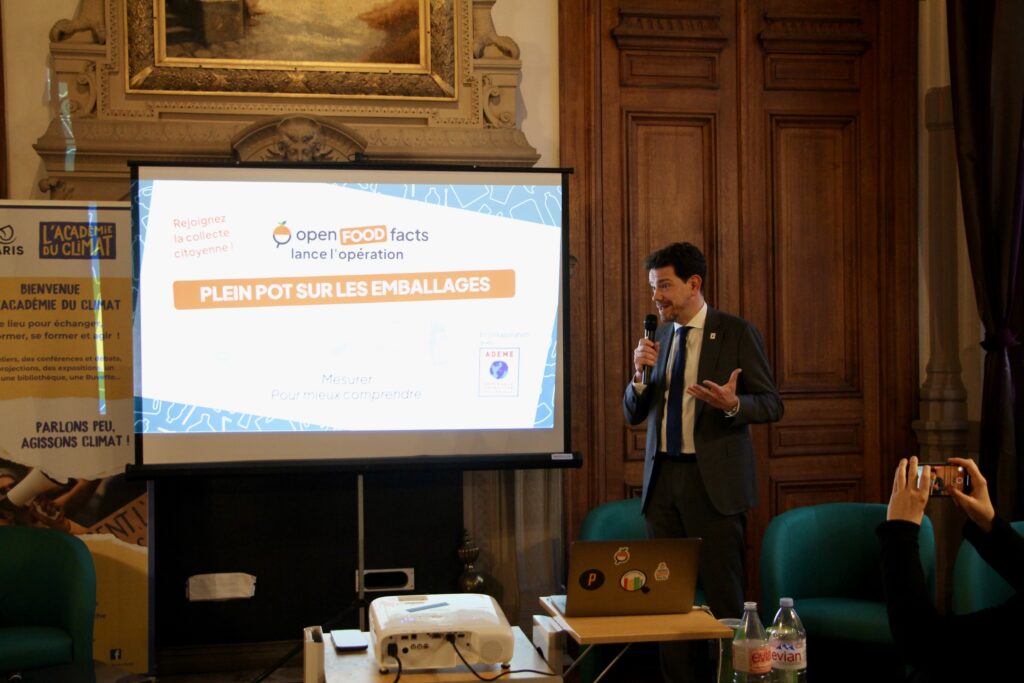
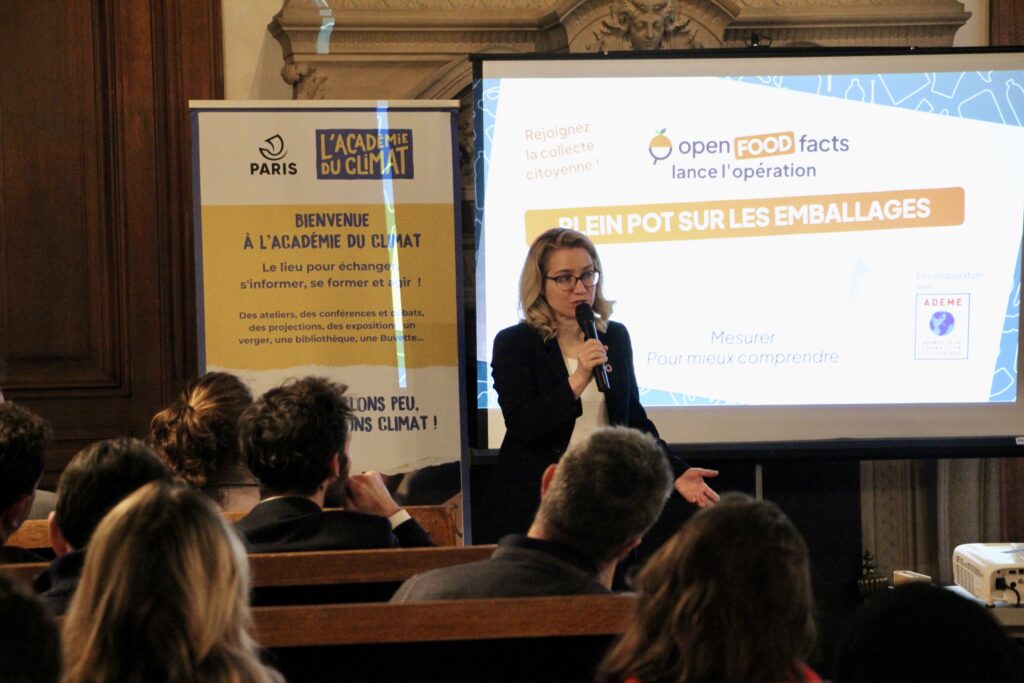

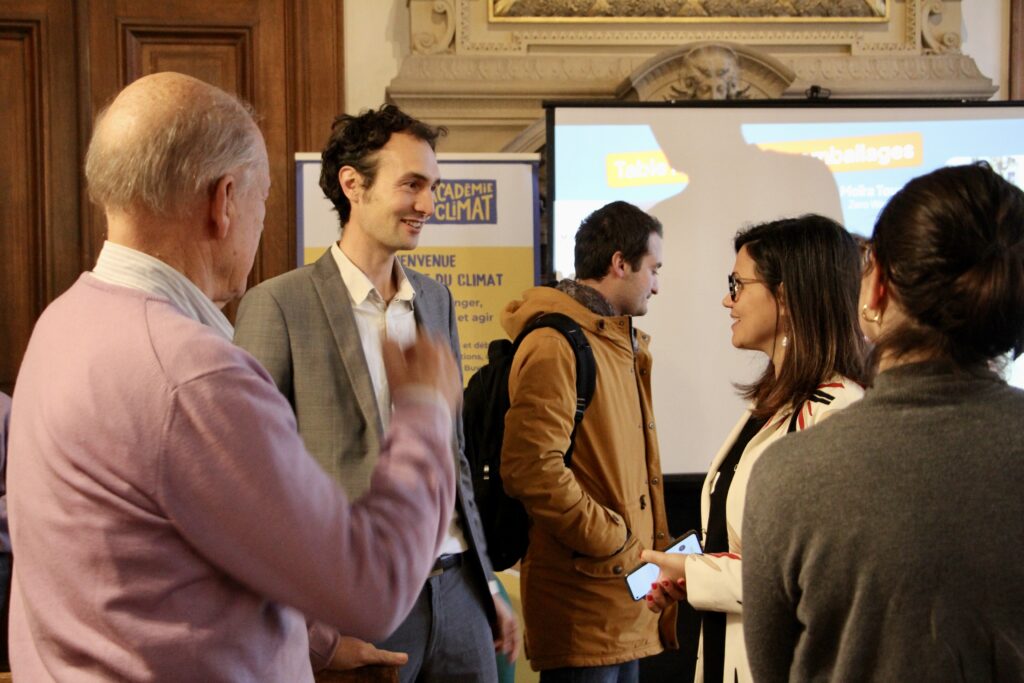
Coordinator (ADEME) and Claudia Giacovelli (UNEP)
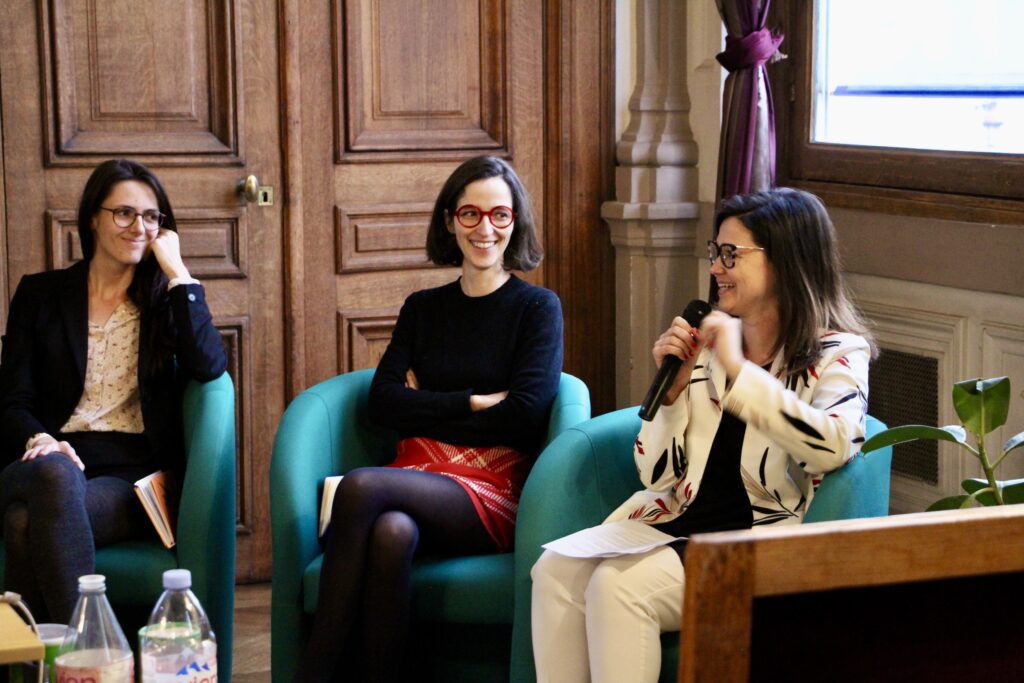
Citizen workshop to collect “packaging” data
After the presentations, it’s time for action !
Citizens join the packaging “scan party” of Open Food Facts.
Wait, what’s a “scan party” ?
It’s the participative collection + data input on to the database. For this, we brought empty and clean packaging from our shopping.
Each small group is responsible for a particular stage of the collection.

Yogurt eaters
At the head of the thread, the tasting of yoghurts, with remarkable yoghurt eaters!
Then, meticulous cleaning of the jar and the lid with a paper towel, to pass it on to the team in charge of entering the “packaging” data.
Data guardians
The packages with their various components are then weighed, one by one, and carefully noted in a table.
Each product is then retrieved using its barcode in the Open Food Facts database (via the app or the website) and the latest “packaging” data is entered in the boxes provided and saved!
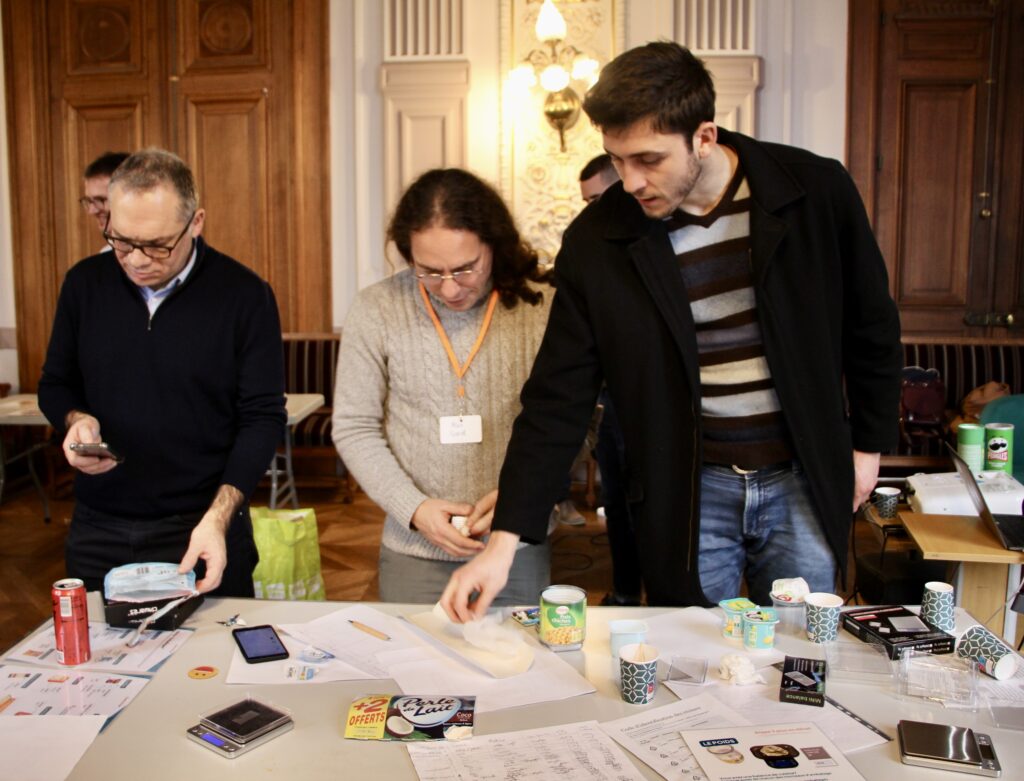
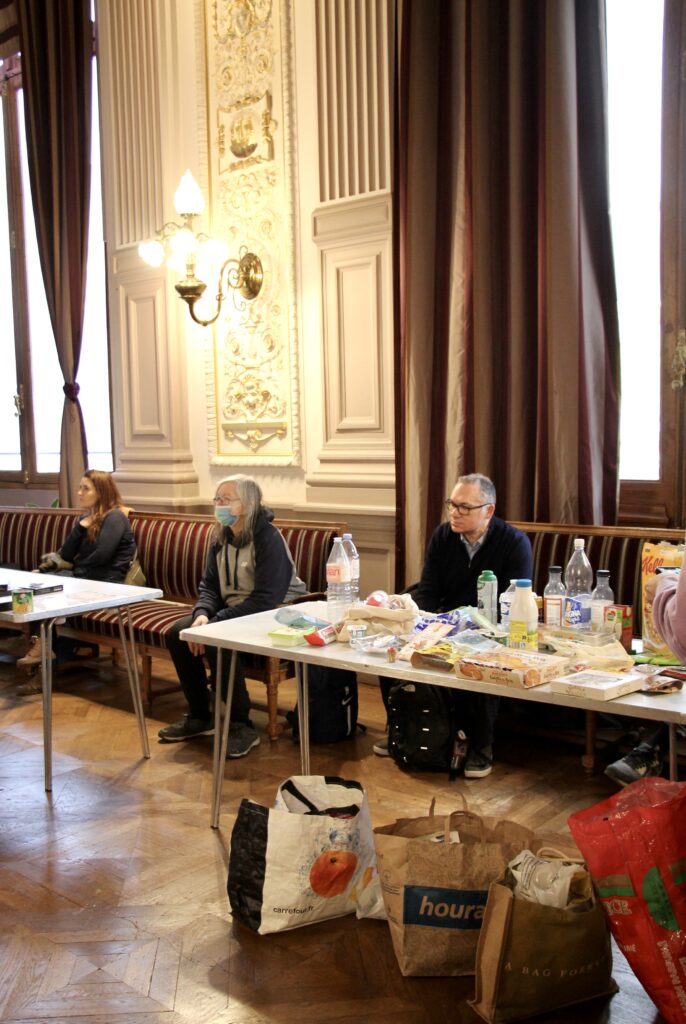
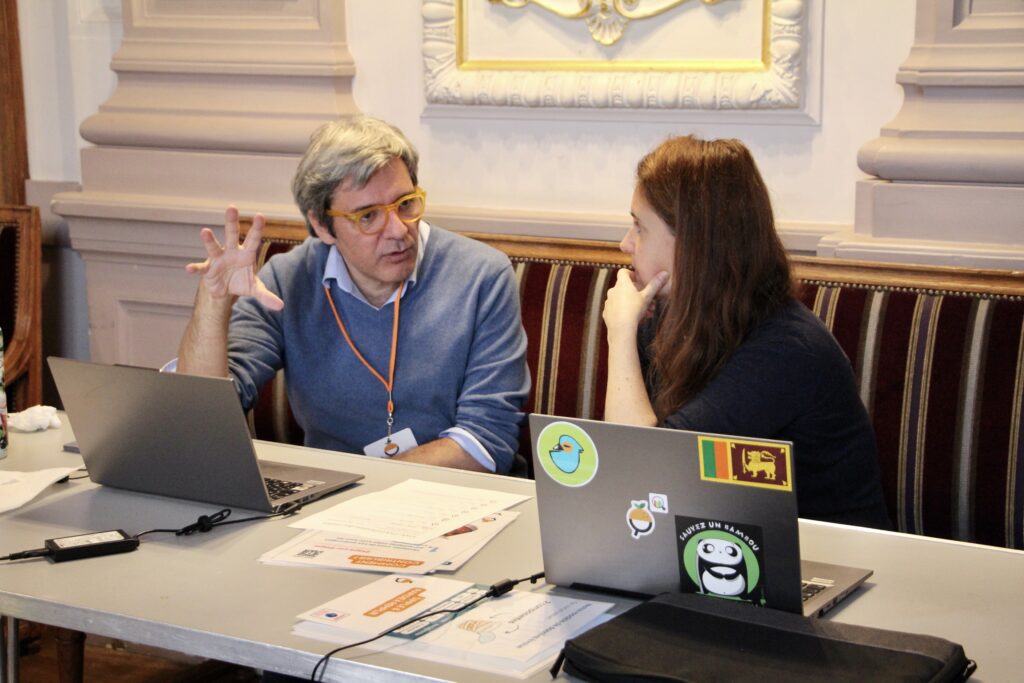
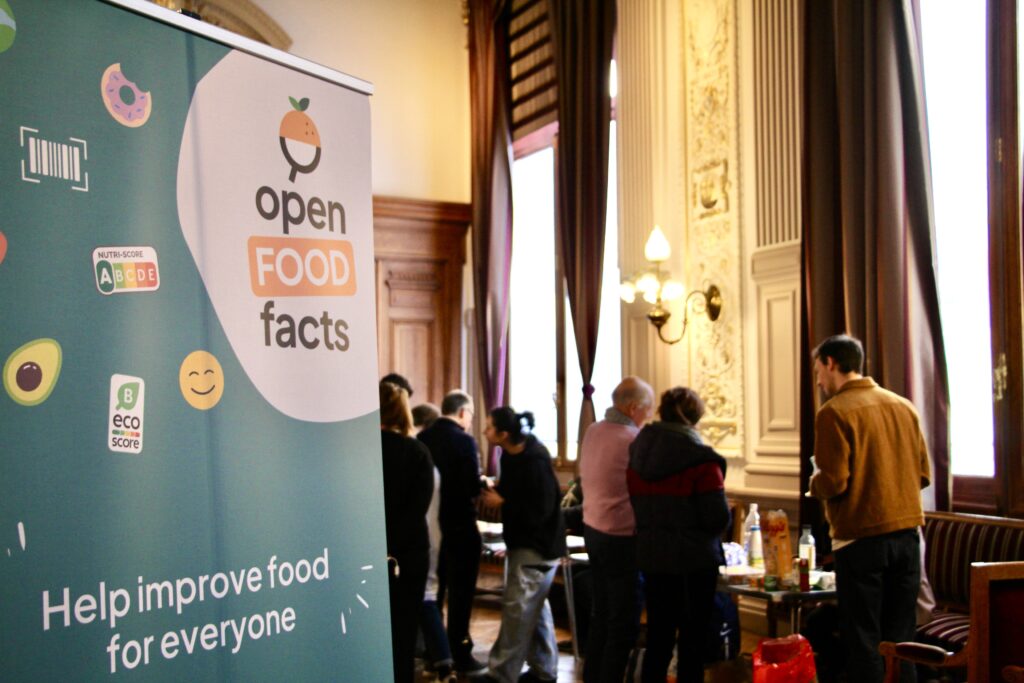
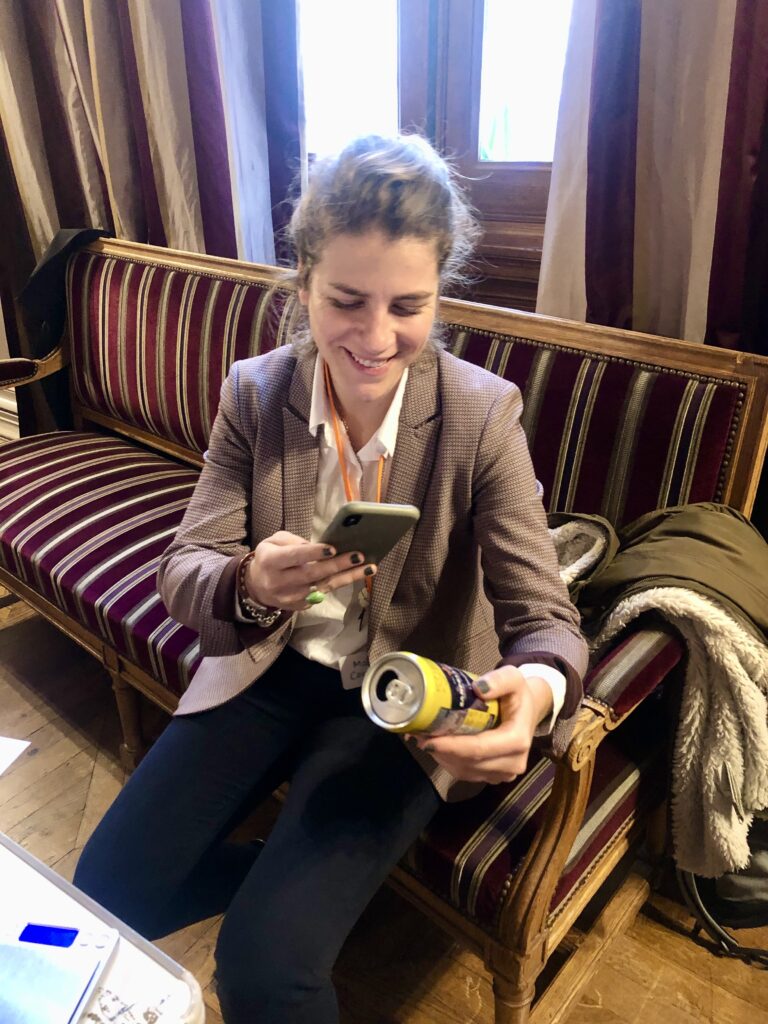
FR: 📰 Reporterre article about this Launch Day “Trop d’emballages: faites changer les pratiques des industriels” (Too much packaging: make the industry actors change their ways).
You too, organize a”scan party” 🥳 !
You have ideas to organize a participative data collection session with your friends, in a school, at work, in a non-profit organization? FANTASTIQUE!
A scan party is easy to organize:
- 🎟 Invite other people
- 🧃Ask them to collect & bring a few food packages (preferably empty and clean) on the D-Day (demands a little preparation a few days before the scan party).
- 🥫✍️ The D-Day: Divide the tasks among the different participants, then weigh, record and enter the data of the packages.
- 🤳 Take some pictures of the workshop and share them on the social networks with #TacklingPackaging to encourage other people to join the operation for more impact.
- ♻️ Once the workshop is over, don’t forget to sort the packaging 😉 !
🙋♀️ You can contact Gala (gala@openfoodfacts.org), who runs the Open Food Facts community, if you have any questions or would like some help organizing your scan party.
Testimony: You can inspire yourself from the workshop organised by Alex – Y a pas d’âge pour un atelier emballage (FR).
Spread the word
Another way to raise awareness about this operation is to share this visual of the operation with your friends, neighbours and colleagues:
